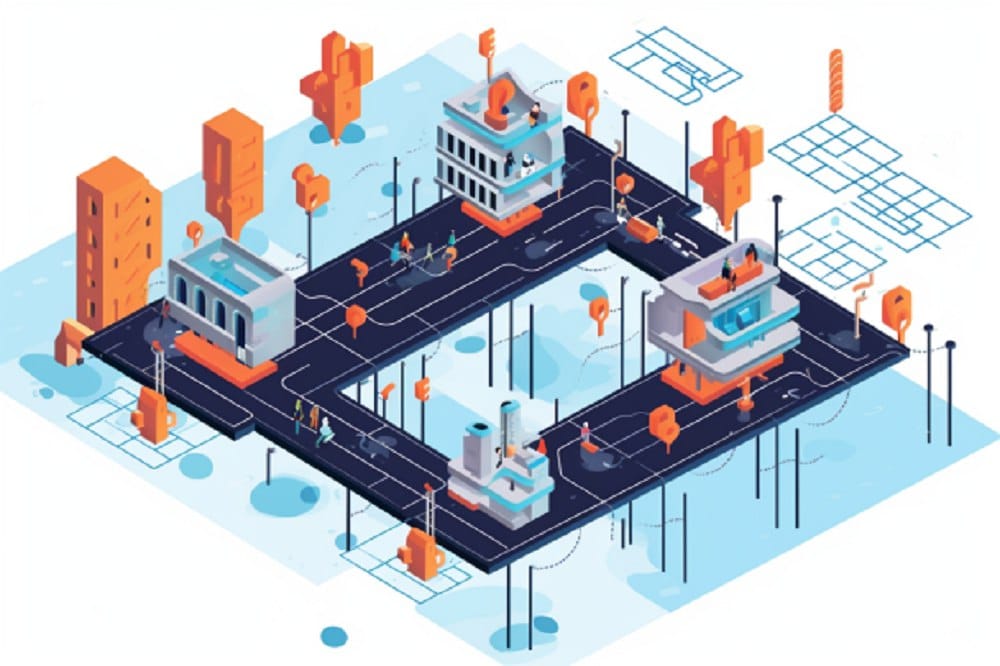The way in which users of DeFi interact with smart contracts has been revolutionized by incorporating DApps into the blockchain. Play-to-win games, blockchain-based voting, yield farming and staking protocols, and NFTs are just a few of the innovations made possible by these new infrastructures. Traditional programmers, however, often encounter difficulties when attempting to work with blockchain technology. Cartesi provides a game-changing answer, giving DeFi users access to industry-standard OSes. Learn about the qualities that make Cartesi such a desirable DApp platform, and look into the CTSI token’s potential as an investment.
What exactly is Cartesi?
Cartesi presents an innovative layer-2 scaling solution for decentralized networks, streamlining DApp creation through user-friendly programming tools. While most smart contracts utilize Solidity on Ethereum, Cartesi addresses the limitation of developer expertise in this language. Cartesi bridges the gap between traditional software platforms and blockchain technology by introducing a Linux-based virtual machine. This novel approach to scalability introduces an entirely new operating system, facilitating efficient development and accelerated growth within the web3 ecosystem.
Team & funding
Heading the Cartesi project is Erick de Moura, an accomplished professional serving as the co-founder and current CEO. Before his role at Cartesi, Moura gained extensive experience as a software designer at WiNGs Telecom, a developer at Arizona Bay, and an engineer at WebRadar. Assisting him as co-founder and chief technology officer is esteemed computer graphics professor Diego Nehab. Augmenting the Cartesi team are key members, including Chief Strategy Officer Augusto Teixeira and Chief Operating Officer Colin Steil.
Cartesi has garnered support from notable investors, including Bigbang Angels, ICONIUM, SOSV, Taiwan Startup Stadium, and Artesian VC. Their investments testify to Cartesi’s potential and have solidified faith in the company’s future.
History
Having debuted in 2018 as a decentralized AI marketplace, Cartesi has since transformed into a robust blockchain operating system. COO Teixeira’s vision to amplify DApp network adoption led to securing investment from an esteemed IOTA co-founder. In 2020, a significant breakthrough occurred with the successful sale of 100 million CTSI tokens, driving the project’s commitment to advancing decentralization in its governance. Notably, the original shareholders continue to wield substantial influence over the company’s trajectory and day-to-day activities.
How does Cartesi Function?
Cartesi disrupts the DApp market with its groundbreaking capabilities. The Linux-based Cartesi Virtual Machine revolutionizes data processing by preserving DApp logic while enabling off-chain computations. Scalability is enhanced through optimistic rollups, facilitating off-chain smart contract calculations and seamless token bridging between layer-1 and layer-2. The Noether side chain streamlines storage management, reducing gas costs and optimizing data storage and memory. With the Descartes SDK, DApp users become verifiers, eliminating transaction costs traditionally borne by blockchain nodes.
Cartesi features
Cartesi stands out among other platforms offering optimistic rollup solutions by providing individual validators with customized roll-up solutions for their specific applications. The Descartes software development kit enables off-chain rollups without compromising decentralization, while its impressive scalability remains a key advantage. With Cartesi, developers can write DApps and smart contracts in a Linux virtual machine (VM) with thorough verification. Its off-chain node capability ensures portability across major chains like Binance Smart Chain, Ethereum, and Matic. Additionally, Cartesi offers privacy settings to safeguard DApp information.
CTSI token
Cartesi’s revolutionary sidechain technology is powered by the CTSI coin, serving as its indispensable fuel. This versatile cryptocurrency lets users pay transaction fees, validate blocks, and purchase through select retail partners. Additionally, CTSI holders gain influential voting rights and an active role in shaping Cartesi’s trajectory through the grant program.
Presently valued at $0.1736, CTSI holds a market size of $144.6 million, with 723.3 million coins circulating. With a maximum supply of 1 billion, the Cartesi token economy possesses ample room for growth and widespread adoption.
Engaging in network participation and earning rewards is made possible through staking CTSI tokens. Gain insights into the historical results of Cartesi pools, including details on participants, staked amounts, and their respective winnings or losses. Explore further to delve into the pool outcomes.
Cartesi wallet
In the Cartesi framework, executing Layer-1 operations involves submitting transactions to the main chain. Simplifying this process is the integrated wallet found within the Cartesi Compute Node, which should be distinguished from the primary wallet. The node installation wizard includes a step for creating the wallet.
Final thoughts
Cartesi revolutionizes the DeFi landscape by bridging the divide between traditional blockchain infrastructure and a more inclusive framework. Its innovative roll-up capability ensures interoperability, scalability, and cost-effective transactions, catering to the growing blockchain community. While efforts are underway to refine a programmer-friendly decentralized financial model, Cartesi remains committed to rigorous validation, including documentation, HTTP API testing, and upcoming audits before Mainnet deployment. The profound impact of this project will gradually unfold, necessitating some time to witness its full transformative potential.
At Tokenhell, we help over 5,000 crypto companies amplify their content reach—and you can join them! For inquiries, reach out to us at info@tokenhell.com. Please remember, cryptocurrencies are highly volatile assets. Always conduct thorough research before making any investment decisions. Some content on this website, including posts under Crypto Cable, Sponsored Articles, and Press Releases, is provided by guest contributors or paid sponsors. The views expressed in these posts do not necessarily represent the opinions of Tokenhell. We are not responsible for the accuracy, quality, or reliability of any third-party content, advertisements, products, or banners featured on this site. For more details, please review our full terms and conditions / disclaimer.
